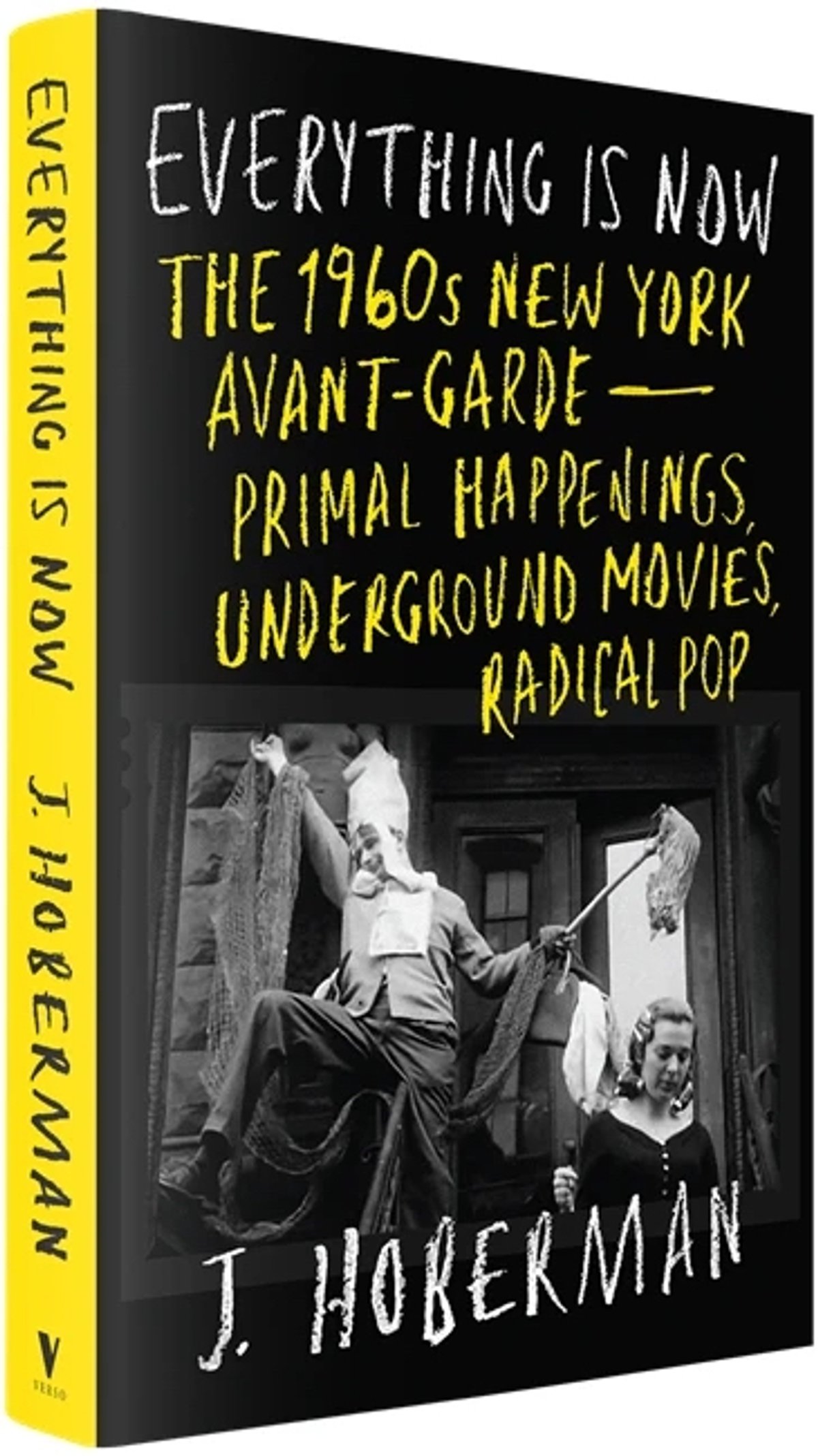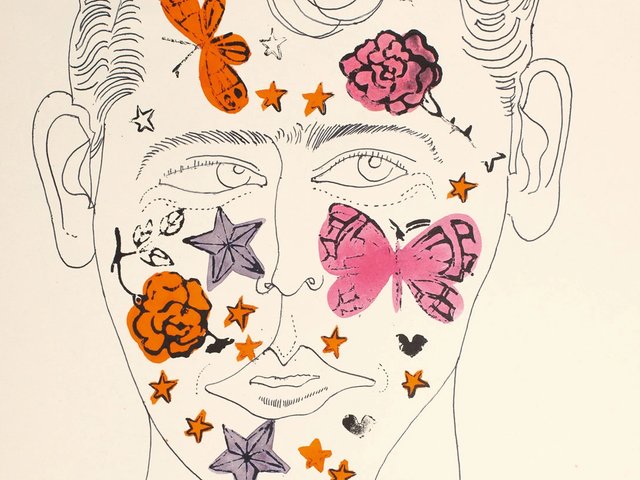In books like The Dream Life and Make My Day, the longtime Village Voice film critic J. Hoberman has honed a unique style of sociocultural history-telling. He situates the films of specific eras—the 1960s in The Dream Life, the Ronald Reagan ascendance and presidency in Make My Day—within the contexts in which they were made, constructing detailed timelines that demonstrate the feedback loop between art and society. Make My Day, for instance, notes that in 1983, Reagan wrote in his diary how captivated he was by the Shroud of Turin a little more than a week before delivering his famous “Evil Empire” speech.
Hoberman’s new book Everything Is Now: The 1960s New York Avant-Garde—Primal Happenings, Underground Movies, Radical Pop expands his purview from cinema to a heteroglossia of artists, poets, theatre makers, musicians, multi-hyphenates and assorted hangers-on—concentrated, as the title says, in New York City’s arts scene during the 1960s. This era of Andy Warhol and his Factory, folk singers at the Gaslight Cafe and Lenny Bruce getting arrested on obscenity charges has already been subject to much romanticisation.
Collective and marginal
Hoberman seeks to distinguish this history from the many others that already exist by focusing less on biographies or in-depth exegeses of already well-scrutinised works than on how these people were informed by the events of the time, influenced each other and impacted society. The thesis is laid out simply in the opening sentence of the first chapter: “Cultural innovation comes from the margins and is essentially collective.”
A representative figure is the performance artist and filmmaker Barbara Rubin, often overlooked but here given special attention. A high school dropout who became an aide-de-camp to the critic Jonas Mekas, Rubin enthusiastically embraced the avant-garde and became well-connected enough to act as an artistic midwife. It is mentioned almost as an aside that in 1964, Rubin both organised orgies for Allen Ginsberg and facilitated a reunion between him and his collaborators on the 1959 Beat film Pull My Daisy at the Factory. Edie Sedgwick fulfils a similar role, with Hoberman tracing her influence on both Blonde on Blonde-era Bob Dylan and Warhol early in his film-making endeavours.
In-depth research
The breadth and depth of Hoberman’s research is remarkable, and these details help this world become tangible for the reader. The effect can be dizzying, but he keeps things oriented through a rigid chronological relaying of events, illustrating the many interlocking causes and effects. In this sphere of the 1960s, the artist Yoko Ono warrants mention before The Beatles, replete with a specific identification of where she lived at the time—112 Chambers Street, currently facing proposed renovation.
Redevelopment is also a key theme. Hoberman asserts that cheap rents are “perhaps the greatest facilitator of artistic innovation”—hardly a novel thought, but illustrated vividly through reinforcement of how many of these artists started out in cold-water apartments. Reading how the Park Place Group was able to rent an 8,000 sq. ft space for its gallery for $100 a month in 1965 is enough to make a modern New Yorker weep.
The book is in conversation with Robert Caro’s The Power Broker (1974), with its subject, the notorious New York public official Robert Moses, something of a recurring villain here. Space is given to how artists reacted to Moses’s absurd plan to carve an expressway through Lower Manhattan and the Moses-overseen 1964 World’s Fair, where Warhol made a mural of the NYPD’s most wanted men, rapidly painted over. Caro’s book is subtitled “Robert Moses and the Fall of New York”; in Everything Is Now, Hoberman reconstructs the New York that fell.
• J.Hoberman, Everything Is Now: The 1960s New York Avant-Garde—Primal Happenings, Underground Movies, Radical Pop, Verso, 464pp, $34.95 (hb)




